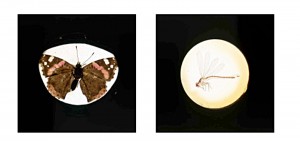Flemish and French-speaking universities join forces for large-scale research into history of magic lantern in Belgium
Domitor is pleased to circulate this press-release of January 18, 2018, and congratulates all the researchers leading this outstanding project, including our members Frank Kessler, Sabine Lenk, Philippe Marion and Dominique Nasta.
The Excellence of Science programme has granted 3.7 million euros to fundamental research into the history of the first visual mass medium in Belgium. In collaboration with an art college and international partners, a team of researchers at two Flemish and two French-speaking universities will spend four years researching the magic lantern in Belgium.
Long before social media, cinema and PowerPoint presentations, images were an important means of communication. The magic lantern, or ‘laterna magica’, was a fascinating and instructive tool, which was especially popular in the 19th century. The invention was used to project transparent images onto glass slides on the walls of theatres, schools and people’s homes. Travelling showmen with lanterns on their backs also put on public lantern shows at fairs. “The magic lantern was one of the first visual mass media. It was used for visual communication in education, religion and politics, but also in science and art”, explains Prof Kurt Vanhoutte (UAntwerp). “Our team therefore consists of researchers from cultural history and history of science, media and communication science, and film and theatre history. Together, we will investigate the role of the magic lantern in the first hundred years of Belgian history.”
This Belgian project ties in with a broader international trend. “For some years now, the magic lantern has been recognised as an important aspect of European heritage”, says Prof. Frank Kessler of Utrecht University. “The historical value of the slides is often underestimated and when it comes to large collections, people are often unsure what to do with them or how to store them.” That is one of the reasons that European universities are now working closely with collectors and museums to digitise and preserve this vulnerable medium.
In Belgium, too, many collections have been found. During a preliminary investigation, Dr Sabine Lenk and Dr Nele Wynants – researchers at the universities of Antwerp and Brussels – found around 100,000 glass slides in Belgian museums, libraries and universities. There are probably many more. The subjects are very diverse and vary from geography, anatomy and microscopy to astronomy. Politicians, the clergy and freemasons also projected images of the lives of saints, distant journeys, colonies and symbols in order to help spread their ideas. “These collections offer unique insights into how Belgian visual culture has developed since the country’s inception. They are an important and necessary addition to more widely known written sources”, say the researchers.
The Excellence of Science (EOS) programme, first launched last year by the Belgian government, is the ideal framework for this research. In the first round, Research Foundation – Flanders (FWO) and its French-speaking counterpart Fonds de la Recherche Scientifique (F.R.S.-FNRS) allocated a total of 118 million euros to 38 research consortia in order to carry out excellent basic research over a period of four years. The EOS programme enables research cooperation between regions and areas through the funding of excellent research consortia made up of research groups from both language communities, potentially supplemented by federal and international research groups.
Practical information:
Project title: B-Magic. The Magic Lantern and its Cultural Impact as Visual Mass Medium in Belgium (1830-1940)
Research area: Human sciences: performance studies, cinema and media studies, urban history, history of science and knowledge, semiotics, visual analysis and narratology, political and communication sciences.
Spokesperson & coordinator: Prof. Kurt Vanhoutte (UAntwerp)
Partners: Prof. VANHOUTTE Kurt, Prof. VAN DAMME Ilja (University of Antwerp), Prof. NASTA Dominique, Prof. VANHAESEBROUCK Karel (Université libre de Bruxelles), WILS Kaat (KULeuven), Prof. MARION Philippe (Université Catholique de Louvain), Dr CARELS Edwin (KASK Gent), Prof. KESSLER Frank (Utrecht University)
Want to know more?
Prof. Kurt Vanhoutte: kurt.vanhoutte@uantwerpen.be (+32 497 46 14 28)
Dr Sabine Lenk: S.Lenk@uu.nl
Dr Nele Wynants: nele.wynants@ulb.ac.be
Excellence of Science (EOS) programme: http://www.eosprogramme.be/



